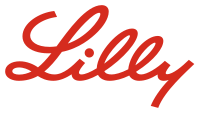
Photo from wikipedia
Objective: The study aimed to assess the cost-effectiveness of sintilimab combined with cisplatin plus paclitaxel versus chemotherapy alone as first-line treatment in patients with advanced or metastatic esophageal squamous cell… Click to show full abstract
Objective: The study aimed to assess the cost-effectiveness of sintilimab combined with cisplatin plus paclitaxel versus chemotherapy alone as first-line treatment in patients with advanced or metastatic esophageal squamous cell carcinoma from the Chinese healthcare system. Materials and methods: A partitioned survival model was developed based on the ORIENT-15 clinical trial. Drug costs and health state utility were obtained from the literature. Outcomes included the health outcomes in life-years, quality-adjusted life-years (QALYs), and the incremental cost-effectiveness ratio. One-way and probabilistic sensitivity analyses were performed to evaluate the model uncertainty. Result: In overall population, patients given sintilimab plus chemotherapy gained more health benefits (0.90 QALYs vs. 0.61 QALYs), and the cost was more (15,399.21 US$ VS. 7475.58 US$) than that for patients in the chemotherapy group. In the subgroup, patients given sintilimab plus chemotherapy gained more health benefits (0.89 QALYs vs. 0.68 QALYs), and the cost was more (15,656.19 US$ vs. 9,162.77 US$) than that for patients in the chemotherapy group. Compared with chemotherapy, patients receiving sintilimab plus chemotherapy had ICERs of $26,773.68/QALY in the overall population and $30,065.50/QALY in the subgroup, which was above the threshold of WTP. Conclusion: Sintilimab plus chemotherapy was more cost-effective than chemotherapy alone for patients with advanced esophageal cancer from the perspective of the Chinese healthcare system.
Journal Title: Frontiers in Pharmacology
Year Published: 2022
Link to full text (if available)
Share on Social Media: Sign Up to like & get
recommendations!